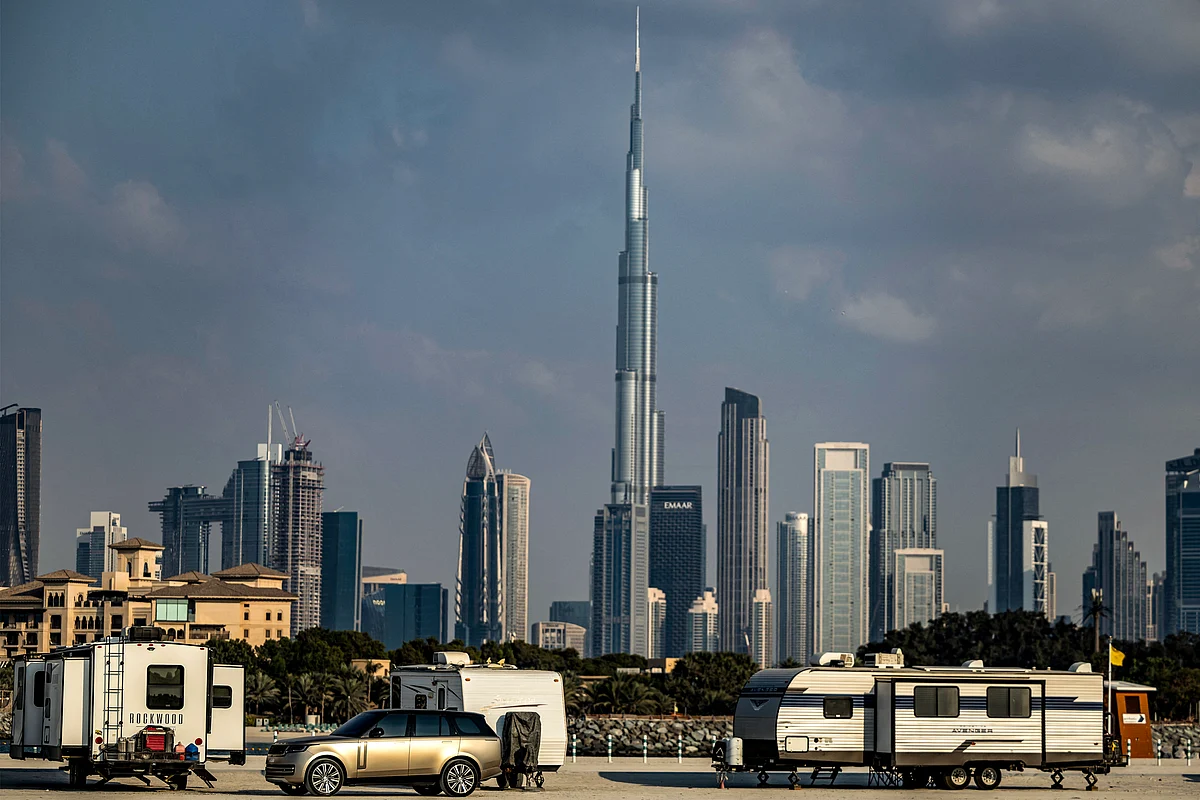
UAE Growth Forecast Leapfrogs Global Trend, IMF Report Says
In its latest World Economic Outlook, the International Monetary Fund has sharply raised its growth projection for the UAE, underscoring the nation's increasingly robust footing amid global volatility.
The IMF now expects the UAE's real GDP to expand by 4.8 per cent in 2025, up from its earlier estimate in April - and forecasts even stronger momentum in 2026 with 5.0 per cent growth, a figure unchanged from its spring outlook.
Recommended For YouThis optimism comes against a backdrop of softening global growth. The WEO projects global expansion to ease from 3.3 per cent in 2024 to 3.2 per cent in 2025, then slip further to 3.1 per cent in 2026. Growth in advanced economies is pegged at roughly 1.5 per cent, while emerging and developing markets are estimated to hold steady just above 4 per cent.
In the Middle East and Central Asia, the pace is expected to rise from 2.6 per cent in 2024 to 3.5 per cent in 2025 and 3.8 per cent in 2026, with the 2025 figure upgraded by half a percentage point from earlier estimates.
The UAE's performance is described in the report as a showcase of resilience amid geopolitical stresses and oil price swings. According to Said Bakhache, head of the IMF's Article IV mission to the UAE, the country has drawn strength from its diversified economy and robust buffers, making it more capable of withstanding external shocks.
The WEO points to several underpinning factors for this upward revision. The UAE's current account surplus widened in 2024, fuelled by stronger exports of goods and services - especially non-hydrocarbon - while import growth slowed. Ongoing expansion of comprehensive trade pacts with India, Indonesia, Türkiye, and South Korea is expected to deepen integration, amplify resilience, and further shift the economy away from fossil fuels.
On the financial front, the IMF describes UAE banks as well capitalised, liquid, and profitable. Declining non-performing loans, conservative loan-to-value thresholds, and the recent introduction of a countercyclical capital buffer helped anchor stability. The Fund also applauds enhancements to liquidity management - via upgrades to the Dirham Monetary Framework - the launch of a Digital Dirham, and the rollout of stablecoin regulation, branding these as key steps in financial modernisation.
In real estate, buoyed by population growth, foreign interest, and the UAE's reputation as a safe haven, the housing market remains active. Systemic risk is tempered by low banking exposure to real estate (at about 18 per cent of risk-weighted assets) and large volumes of self-financing. Still, the IMF warns that changes in capital flows or sentiment shifts will need vigilant monitoring.
Structural reform efforts earn praise, too. Investment in infrastructure, innovation, sustainability, and AI is positioning the UAE as a futurist economic hub. The Fund also heralds the nation's strides in climate adaptation, water and food security, and its removal from the Financial Action Task Force's enhanced monitoring list following stronger anti-money-laundering steps.
Looking beyond 2026, many of the dynamics supporting UAE growth remain firmly in place: sound fiscal policy, ample buffers, an evolving regulatory regime, and a forward-leaning reform agenda. If global uncertainties ease and trade opens further, the UAE could continue to lead regional growth well into the next decade - with risks tempered but not eliminated.

Legal Disclaimer:
MENAFN provides the
information “as is” without warranty of any kind. We do not accept
any responsibility or liability for the accuracy, content, images,
videos, licenses, completeness, legality, or reliability of the information
contained in this article. If you have any complaints or copyright
issues related to this article, kindly contact the provider above.
Most popular stories
Market Research

- Casper Network Advances Regulated Tokenization With ERC-3643 Standard
- Forex Expo Dubai Wins Guinness World Recordstm With 20,021 Visitors
- Superiorstar Prosperity Group Russell Hawthorne Highlights New Machine Learning Risk Framework
- Freedom Holding Corp. (FRHC) Shares Included In The Motley Fool's TMF Moneyball Portfolio
- Versus Trade Launches Master IB Program: Multi-Tier Commission Structure
- Ozzy Tyres Grows Their Monsta Terrain Gripper Tyres Performing In Australian Summers




















Comments
No comment